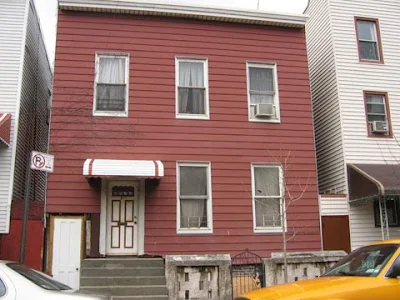The Art Project
I cannot be entirely sure of the reason, but I want to tell the story of a house renovation project in the Williamsburg neighborhood of Brooklyn. Of late I have been collecting requests to re-enter this line of work after what has been essentially a 5 year hiatus. Maybe it's worth rehashing my experience so that I simply do not trip over what's been forgotten. Perhaps you will gain something from it, or, at the least, live vicariously through it should you have ever dreamed of this work.
_____________________________________
An art project is the carpenter's epithet for creative, but often complicated, solutions to carpentry problems. I don't remember when I first heard it, although I hear echoes bouncing off teenage precipices. The last time I heard it applied to my work was at the age of 33 on a job building out a yoga studio. Soon after I left that job, given too much masculine exceptionalism amongst the other hires to ever really find my place. I felt pretty certain, then, that this was it for me, but one last opportunity was pushed across the table before I left it for good. This is that story.
In late 2002, the same friend who brought me onto that yoga job, asked me to finish up a job for him at a 4 story building in Williamsburg. I was hesitant to get involved, having had some carpentry experience, mostly building garden structures, but certainly not as much as I deemed necessary. He assured me it would be a piece of cake -all I would be doing was the easy finish work of tacking the shoe moulding on each floor's baseboard. Easy -done in a month, or less.
What I didn't know was that he wanted out, and by bringing me in, he could do it guilt-free. What was supposed to be a one month job turned out to be 5 months long, and by the end, I was leading our motley crew of an ex-con, artists, druggie(s), theatre set designer, and Ben -from Iowa. I knew that something was wrong my first day on the job -I was to start on the fourth floor, the uppermost. This, even I understood, was inverted. When rehabbing an old building, it's best to start from the foundation and work your way up. It, then, should be no surprise to you that that building has since been completely demolished, an identical building of cinderblock in its place. Why this, despite all that work, time, money, was still financially agreeable to the owner, is beyond me. But the truth is, when we revealed to her the lack of structural integrity, she asked only, "How long do we got?" Less than 5 years later that building was up for sale. And now its gone.
After the short stint at the yoga studio, I moved onto something else. Honestly, I cannot remember all the things I have done for money between the memorable jobs. I might have built a concrete and cinderblock folly for a garden I built in Park Slope. I think that's it, because Ben helped me with that project. By winter time, I have no idea where I was getting my cash from. No idea. No doubt then, that I was eager to sign on to a friend's home renovation as the lead carpenter. The deal was that he, the owner, would be the GC ,or general contractor, responsible for managing the job site, all contractors, expediting projects like trash removal or ordering things like siding, finding a plumber. All else was left to me. I became a mason, an electrician, rough carpenter, finish carpenter, occasional sheetrocker (but no mud man am I), tile setter, and my least favorite -demolition man. I was all these things on the previous jobs, but this time, for a friend's home, it mattered -my name would be all over it and the relationship would be at stake.
Part I
The House

It was old, and owned by people without much money for repairs over Williamsburg's last hundred years. In fact, like so many in this neighborhood, it wasn't a patrician brownstone, or even working-class brick. No, it was wood-framed with a rubble foundation -the cheapest methods at the time, reworked over the years to accommodate the multiple families living in this modest two story with basement. Each successive repair was laid right over the last, each new window was smaller and junkier than the last. The home's original siding was its sheathing, and like so many in working class neighborhoods, the owner opted for the first wave of asphalt shingle replacement siding, and then the second wave of aluminum. These were laid directly over the previous siding -after all, who had money for demolition and removal? No insulation was ever present to help keep the hot water heating in. Patchwork fixes and awkward additions created conditions for deterioration and concealment. The electricity? Don't even ask.
Nothing would be left untouched. In preparation, I bought a couple of books on carpentry before we started, thinking that experienced practitioners willing to write would point me in the right direction before I went off the side of a cliff. Ninety nine percent of that reading was worth every minute, with only a few misteps on product recommendations along the way. If you ever want to renovate an old house or just know what your carpenter is doing, buy this reference book by George Nash. Another book, which shamefully I cannot find or remember the title or author, was extremely helpful minus those product recommendations.

The rear.
Please write the rest of this soon; it's VERY interesting!
ReplyDeleteI used to live 10 blocks from Williamsburg and some of the houses are in such disrepair! Looking forward to reading what you did to this house to fix it up.
ReplyDelete